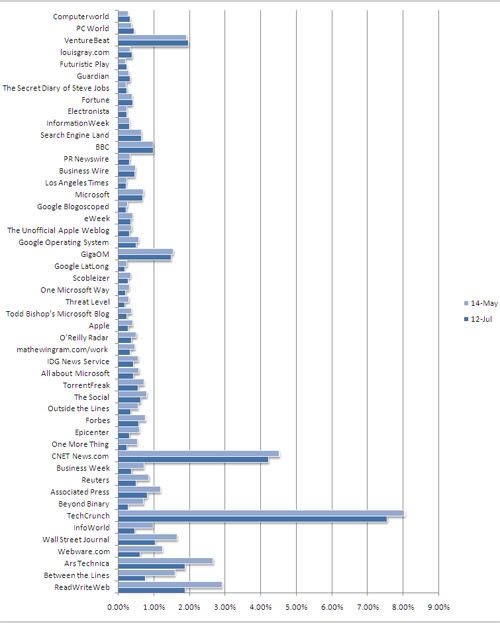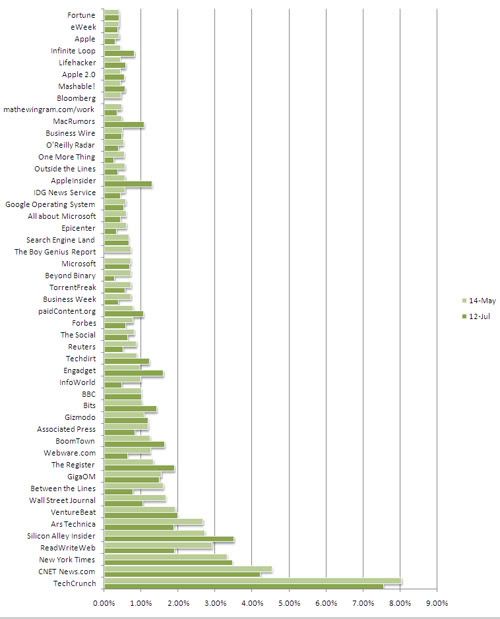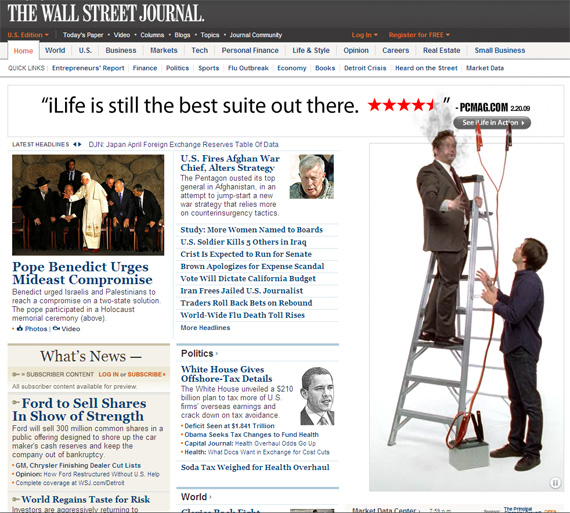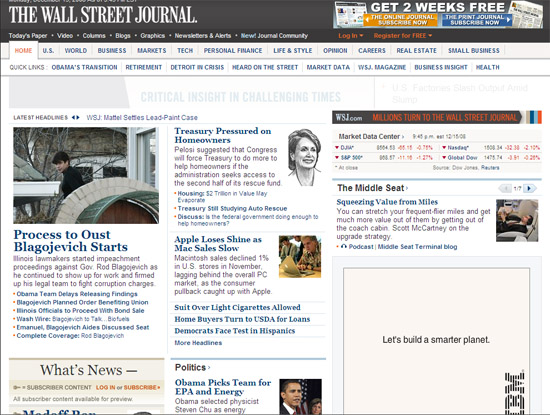I've analyzed Techeme's Leaderboard several times before (headlines vs. discussions, 'presence' vs. pageviews, etc) and thought it would be worthwhile to understand movement within the leaderboard.
I compared Techmeme's Leaderboard on May 14 vs. today's current Leaderboard (July 12). Techmeme ranks their top 100 blogs by "Presence", the percentage of headline space a source occupies over the 30-day period. The results are fascinating.
First, Techmeme's head has gotten less powerful. TechCrunch represented 8.05% of Techmeme's headlines on May 14th and fell to 7.55% two months later... the 7th largest gain during that period. Techmeme's top 10 sources represented 31% of all headlines two months ago and now account for 29%.
Only two of Techmeme's top 10 sources grew during that period: Silicon Alley Insider and the New York Times. In fact, five of the top ten sources saw the largest total drops:
Techcrunch (#1 on May 14, #1 on July 12): -0.49% ; seventh largest fall
Wall Street Journal (#8 in May, #18 in July): -0.61%, fifth largest fall
ArsTechnica (#6 in May, #8 in July): -0.79%; third largest fall
Between the Lines (#9 in May, #23 in July): -0.82%; second largest fall
ReadWrite Web (#4 in May, #7 in July) - 1.03% ; largest fall
Techmeme's Leaderboard ranked by biggest period-over-period change in 'presence':

Techmeme is often criticized for being too reliant on the major blogs... but their Leaderboard's shifting content providers suggests that either:
- Techmeme's algorithm is giving greater credibility to new / small sources, and/or
- great content is coming from new / small blogs
Over the last two months, nearly 1/3rd of Techmeme's Leaderboard has turned over: there are 27 new blogs within Techmeme's top 100. The flip side of the argument, however, is that the largest gainers during this two month period are prominent sources and big brands:
Source / Net Gain
NewTeeVee +43
Financial Times +43
San Francisco Chronicle +42
CenterNetworks +33
Tech Trader Daily +31
Download Squad +25
MacRumors +24
Infinite Loop +24
Valleywag +23
AppleInsider +22
Washington Post +22
A VC +15
Lifehacker +14
Mashable! +11
PC World +11
Apple 2.0 +10
Futuristic Play +10
Engadget +9
Techmeme's Leaderboard compared from May 14 to July 12:









